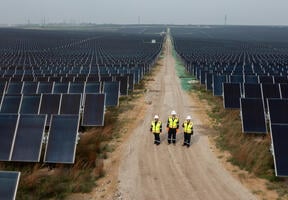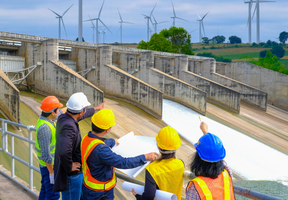Still Time to Act in The Face of Faster Climate Change
5 min read
The planet’s climate is changing faster than expected and extreme climate events are set to become more commonplace, says the IPCC report published in August 2021. But it need not be inevitable: “immediate, rapid and large-scale” reductions in greenhouse gas emissions from human activities could stabilize global temperatures in 20 or 30 years, according to the report.

© getty/StockPlanets
The published the first part of its sixth report detailing the work carried out by policymakers around the world during the COP26 meeting in Glasgow held in November 2021. Since 1988, the IPCC has analyzed and drawn up synthesis reports from thousands of scientific studies the world over and contributed to international efforts to fight .
The report, published in August 2021, was written by 234 scientists from 66 countries on the basis of 14,000 studies and 78,000 expert observations. As with previous reports, it is extremely detailed and complex. Planète Energies has broken the report down into five key points:
- Faster average global warming. The 2015 Paris Agreement had set the goal of limiting global warming to below 2°C in this century (compared to pre-industrial levels) and world governments had set their own CO2 reduction targets. However, current IPCC forecasts are pessimistic: +1.5°C by 2030 or 2040, +3°C in 2100 if countries stay true to the insufficient commitments made in 2015, and +4°C or more if we continue as we are today.
- Global warming and waves. Weather and climate are not the same. But in the event of a 1.5°C rise in global temperature, we will be faced with increasing, more powerful heat waves, longer hot seasons, and shorter cold seasons. An increase of 2°C would bring about heat waves more likely to reach critical tolerance thresholds for agriculture and human health. Rising temperatures in tropical countries mean an increase in mosquitoes, which will lead to an increased risk of diseases such as malaria. Developed countries will also have their share of problems; the major heat wave in 2003 caused the death of 19,000 elderly people in France.
- It’s not just about temperatures. brings more intense rain and flooding in high altitudes, as well as more severe droughts in subtropical regions. In addition, CO2 that has dissolved in water tends to make oceans more acidic. This affects marine ecosystems and the people that depend on them.
- We cannot avoid rising sea levels. Polar ice is melting faster. By the end of summer 2020, the surface area of Arctic sea ice was 5.7 million square kilometers, the lowest figure since records began in 1978. This contributes to rising ocean levels, which have already risen by 20 cm in a century. Today, ocean levels are rising even faster, and could represent an increase of 1 meter by 2100. Storms will have more far-reaching impacts, with estuaries and small islands being particularly threatened. In the Kiribati archipelago in the middle of the Pacific, 32 small islands have already disappeared. In the Maldives, 80% of the nearly 1,200 islands are less than a meter above sea level.
- The warming effect is unequal. The regions most at risk of severe droughts are the Mediterranean basin, Central America, the south-west of the United States, the Amazon rainforest, Chile, and south and west Africa. However, a slow-down of warm sea currents from the
may mean weaker warming in north-west Europe. The IPCC recently published an interesting interactive atlas on the matter.
- Keep an eye on methane. The IPCC report sounded the alarm on methane (CH4), which does not remain in the atmosphere as long as CO2 but has a stronger impact on global warming. Methane comes from the extraction of natural gas, the use of mines, waste treatment, and cattle rearing. Its concentration in the atmosphere is at its highest in 800,000 years.















